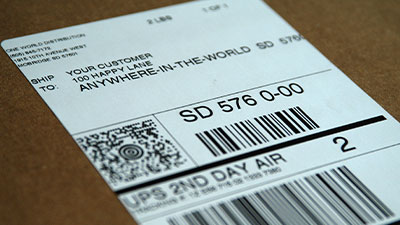If you’re working with a third-party logistics (3PL) company to handle order fulfillment, you need to know whether they meet the mark. 3PL performance metrics are crucial in figuring out how well your logistics operations are running. They give you a clear picture of your order fulfillment, warehousing, and last-mile delivery processes.
Efficient logistics have a direct impact on customer satisfaction. When deliveries are prompt and accurate, customers develop a stronger trust in your brand. This trust leads to increased loyalty and repeat business.
Optimizing logistics processes results in cost savings by reducing unnecessary expenses and improving profit margins. Effective 3PL management also allows companies to grow without being held back by logistical inefficiencies.
In this guide, you’ll discover important 3PL KPIs and Performance Metrics for ecommerce logistics. You’ll learn how to track these metrics to improve your logistics operations and how you can determine if your approach isn’t working. Whether you’re an industry veteran or new to ecommerce logistics, these are the KPIs that matter most.
Understanding 3PL in Ecommerce Logistics
Navigating the complexities of ecommerce requires a robust logistics framework, often supplied by 3PLs. These entities play a crucial role in enhancing the efficiency and scalability of your business operations.
Definition of 3PL in Ecommerce
A 3PL refers to the outsourcing of ecommerce logistics processes to specialized service providers. This includes a range of services such as inventory management, warehousing, transportation, and order fulfillment. By partnering with a 3PL provider, ecommerce businesses can focus on their core competencies while leveraging the logistical expertise and infrastructure that these partners offer.
The Role of 3PL in Order Fulfillment, Warehousing, and Last-Mile Delivery
Order Fulfillment
The essence of 3PL lies in its ability to streamline order fulfillment processes. From picking and packing to shipping products directly to customers, 3PLs manage each step with precision. This ensures quick turnaround times and enhances customer satisfaction through timely deliveries.
Warehousing
Efficient storage solutions are crucial for maintaining inventory levels and ensuring product availability. 3PL providers offer extensive warehousing capabilities that include not just storage but also inventory management systems and lot tracking. These systems provide real-time data on stock levels, enabling businesses to make informed decisions about restocking and demand forecasting.
Last-Mile Delivery
Considered the most critical phase in the delivery process, last-mile delivery is where customer experience is made or broken. 3PLs optimize this stage by utilizing advanced routing technologies and an expansive network of couriers. This ensures that products reach their final destination quickly and without complications.
Partnering with a reputable 3PL provider enhances operational efficiency across these vital areas, directly translating into cost savings and improved customer experiences.
Why Tracking 3PL Performance Metrics is Crucial for Growth
The importance of tracking 3PL performance metrics cannot be overstated. The ability to effectively interpret and utilize these metrics directly impacts your business. Companies using a capable 3PL must ensure these partnerships are yielding optimal results. You can steadily lower expenses and improve service quality by consistently evaluating KPIs.
1. Improved Operational Efficiency
- Order Fulfillment Accuracy: Monitoring order accuracy ensures that products reach customers as intended, reducing costly returns and enhancing customer satisfaction.
- Timely Deliveries: Tracking delivery timelines helps in identifying bottlenecks, allowing businesses to streamline processes and improve speed-to-market.
2. Cost Management
- Shipping Costs: Keeping a close eye on shipping expenses facilitates better budget allocation and cost reduction strategies.
- Inventory Management: Efficient inventory turnover reduces holding costs, freeing up capital for other strategic initiatives.
3. Customer Satisfaction and Retention
- Enhanced Customer Experience: By ensuring orders are accurate and delivered on time, businesses foster trust and build brand loyalty.
- Personalization Opportunities: Offering product personalization services such as P2C fulfillment with customization options like embroidery or engraving. Increase your average order value and turns fulfillment from a cost center to a profit center.
4. Scalability
- Adaptable Operations: Data-driven insights provide the agility needed to scale operations smoothly as demand fluctuates.
- Global Reach: Effective management of logistics enables expansion into new markets while maintaining service quality.
3PLs have robust analytics tools. Maintain regular communication with your 3PL to monitor and implement new strategies to improve your ecommerce business.
Essential KPIs for Evaluating 3PL Providers
Each KPI serves as a critical measure of logistics performance, so you know if you need to switch to another more capable 3PL.
1. Order Accuracy
Order accuracy stands at the forefront of ecommerce logistics, directly impacting customer satisfaction and brand reputation. This metric measures the precision with which orders are picked, packed, and shipped without errors or discrepancies.
Significance in Ecommerce Logistics:
- Customer Satisfaction: Accurate orders enhance customer trust and loyalty. Errors can lead to returns, increased costs, and customer dissatisfaction.
- Operational Efficiency: High order accuracy reduces the need for rework and returns processing, thereby minimizing operational costs.
- Brand Reputation: Consistently accurate deliveries fortify a brand’s image as reliable and efficient.
Ideal Accuracy Rate Benchmarks:
Achieving an order accuracy rate above 99% is considered industry best practice. This benchmark ensures minimal errors in order fulfillment processes:
- Technology Integration: Implementing advanced Warehouse Management Systems (WMS) to automate inventory management and reduce human error.
- Training Programs: Continuous training for warehouse staff on correct picking and packing procedures helps maintain high accuracy levels.
- Quality Control Measures: Introducing checkpoints for verifying order details before dispatch can prevent mistakes.
Strategies to Achieve Optimal Order Accuracy:
- Automated Solutions: Employ barcode scanning, Radio Frequency Identification (RFID), and other automation tools to enhance accuracy.
- Regular Audits: Conduct periodic audits of inventory and fulfillment processes to identify potential areas of improvement.
- Feedback Mechanisms: Establish channels for immediate feedback on order inaccuracies to rectify issues promptly and prevent recurrence.
By ensuring each step in the fulfillment process is executed flawlessly, businesses can reduce costs associated with errors while bolstering customer satisfaction.
On-time Delivery Rate is an important logistics performance metric used to assess 3Pls. This KPI measures the percentage of orders delivered within the promised time frame, reflecting how efficient and reliable the 3PL’s operations are. For ecommerce businesses, where customer satisfaction depends on timely delivery, it is crucial to maintain a high on-time delivery rate.
Key considerations include:
- Importance: Ensuring products reach customers when expected is paramount. Late deliveries can lead to negative reviews, increased return rates, and lost sales opportunities.
- Ideal Benchmarks: Striving for an on-time delivery rate close to 100% is the gold standard. Achieving this benchmark requires a combined effort involving accurate demand forecasting, efficient route planning, and proactive communication with stakeholders.
With order accuracy KPIs already establishing a foundation for quality fulfillment, stay on top of your on-time delivery rate metrics.
3. Inbound Receiving Time (Dock-to-Stock)
The Inbound Receiving Time, often referred to as the dock-to-stock time, is a critical metric in the evaluation of 3PL KPIs. It measures the time taken from when goods arrive at a warehouse receiving dock until they are stored and available for order fulfillment. This metric is paramount in assessing logistics performance as it directly impacts supply chain efficiency.
 Long inbound receiving times can disrupt inventory accuracy, delay order processing, and ultimately affect customer satisfaction. Typically, industry standards suggest that processing times should not exceed 48 hours; however, best practices recommend reducing this to under 24 hours to optimize operations.
Long inbound receiving times can disrupt inventory accuracy, delay order processing, and ultimately affect customer satisfaction. Typically, industry standards suggest that processing times should not exceed 48 hours; however, best practices recommend reducing this to under 24 hours to optimize operations.
To achieve these optimal processing times, consider implementing strategies such as:
- Automation: Utilize automation tools for inventory checks and stock placement to reduce manual errors and speed up processes.
- Efficient Layout Design: Ensure your warehouse layout facilitates quick movement of goods from dock to stock.
- Training: Invest in employee training programs tailored to enhance efficiency in handling inbound shipments.
Monitoring the dock-to-stock time KPI not only aids in maintaining effective supply chain management but also plays a crucial role in meeting customer expectations for prompt service delivery.
4. Cost per Unit Shipped
Cost per Unit Shipped is a crucial metric. It measures the cost of shipping each individual unit, helping you assess the value of your logistics partnership.
Why it Matters
Keeping track of the costs associated with shipping units is essential when evaluating potential 3PL partners. This metric directly impacts a company’s profitability and plays a significant role in making strategic decisions about pricing and managing the supply chain.
What it Reveals
Cost per Unit Shipped is part of a larger system used to measure logistics performance. It helps companies identify areas where they can improve their operations and cut down on unnecessary expenses. By focusing on this metric, businesses can find ways to optimize their costs without sacrificing the quality of service they provide.
How it Influences Decision-Making
Comparing this KPI to industry standards allows businesses to determine if their logistical strategies are in line with market expectations or if adjustments are needed. A lower cost indicates efficient operations and effective negotiations with carriers, while a higher price may reveal inefficiencies or an opportunity to renegotiate terms.
Understanding and utilizing 3PL warehouse KPIs like Cost per Unit Shipped enables businesses to maintain competitive pricing structures while ensuring profitability and scalability in their supply chain efforts.
Strategies for Managing 3PL Performance Effectively
Regular Performance Reviews with Your 3PL Partners
Managing 3PL performance effectively requires a structured approach, particularly through the establishment of regular performance reviews. These reviews are crucial in assessing your provider’s alignment with agreed-upon KPIs and ensuring consistent service quality.
Setting Up Regular Review Schedules
Establishing a cadence for performance reviews is crucial. Consider quarterly or bi-monthly meetings to maintain a continuous dialogue with your 3PL partner. This regular interaction helps identify discrepancies early and creates a collaborative environment for improvement.
Key Areas to Focus On During Reviews
- Order Accuracy: Analyze discrepancies and root causes to improve accuracy rates beyond the industry standard of 99%. Discuss strategies for enhancing order picking, packing processes, and error-proofing mechanisms.
- On-time Delivery Rates: Evaluate delivery timelines against benchmarks close to 100%. Address any bottlenecks in transit times or last-mile delivery issues that may affect customer satisfaction. Strive for sustainable fulfillment and improved speeds to enable overnight shipping options.
- Inbound Receiving Time (Dock-to-Stock): Review whether the processing times meet best practices under 24 hours. Consider warehouse layout optimization or staff training to expedite dock-to-stock cycles.
- Cost per Unit Shipped: Scrutinize shipping costs to ensure competitive pricing while maintaining service quality. Explore opportunities for cost savings through bulk shipping discounts or optimized packaging solutions.
Regular performance reviews serve as an anchor point in your relationship with your 3PL provider. They provide a platform for transparent communication, helping you align logistics operations with business goals. By focusing on these key areas, you can drive continuous improvement, enhance operational efficiency, and sustain a competitive edge.
Leveraging Technology & Data Analytics for Effective Management
Advanced data analytics tools empower businesses to monitor KPIs with precision, ensuring logistics operations align with strategic goals. A robust client portal acts as a central hub, offering customizable reports and visualizations that provide real-time insights into key performance metrics.
Key benefits of integrating technology into logistics management include:
- Enhanced Visibility: Real-time data access facilitates proactive decision-making and swift issue resolution.
- Performance Tracking: Automated systems allow for continuous monitoring of critical KPIs such as order accuracy and on-time delivery, enabling quick adjustments to maintain service levels.
- Relationship Management: Consistent data-driven insights strengthen relationships with third-party logistics providers by highlighting areas for improvement and fostering transparency.
Incorporating technology optimizes supply chain efficiency and reinforces business growth through informed adjustments.
Review Your KPIs with The Pros
Tracking the right logistics KPIs is just the beginning—turning insights into action is what drives real success. At One World Direct, we don’t just track performance; we optimize it for growth.
Why Partner with OWD?
- 99% Two-Day Shipping Nationwide – Thanks to our three strategically located fulfillment centers
- Flat-Rate Shipping Options – Predictable costs, no surprises
- Ecommerce Call Center Services – Improve customer satisfaction with expert support
- Personalized-to-Consumer (P2C) Fulfillment – Stand out with customized packaging and branding
Whether you’re scaling fast or optimizing costs, the right 3PL partner makes all the difference. Let’s discuss how OWD can help you reduce costs, improve efficiency, and elevate your brand.
FAQs (Frequently Asked Questions)
What are 3PL KPIs and why are they important for ecommerce logistics?
3PL KPIs, or Third-Party Logistics Key Performance Indicators, are metrics used to evaluate the performance of logistics providers in ecommerce. They are crucial because they help businesses measure efficiency, customer satisfaction, cost savings, and scalability, which are essential for growth in the competitive ecommerce landscape.
How does order accuracy impact ecommerce logistics?
Order accuracy refers to the percentage of orders that are fulfilled correctly. In ecommerce logistics, maintaining an ideal accuracy rate above 99% is significant as it directly affects customer satisfaction and retention. High-order accuracy reduces returns and enhances brand reputation.
What is the ideal benchmark for on-time delivery rates in 3PL performance?
The ideal benchmark for on-time delivery rates in 3PL performance is close to 100%. This metric is critical because timely deliveries improve customer satisfaction and trust in the brand, ultimately driving repeat business.
What does inbound receiving time (dock-to-stock) KPI measure in logistics?
The inbound receiving time KPI measures how quickly items are processed from arrival at the dock to being stocked in the warehouse. Best practices suggest processing times should be under 24 hours, which enhances overall supply chain efficiency and responsiveness.
How can businesses effectively manage their 3PL providers' performance?
Businesses can effectively manage their 3PL providers by conducting regular performance reviews based on agreed-upon KPIs. Additionally, leveraging technology and data analytics tools can provide insights into performance trends and areas for improvement.
Why is monitoring cost per unit shipped important when evaluating 3PL partners?
Monitoring cost per unit shipped is essential when evaluating potential 3PL partners because it directly impacts profitability. Understanding these costs allows businesses to make informed decisions about logistics partnerships and identify opportunities for cost savings.




